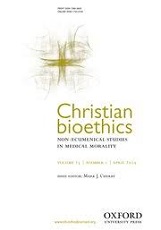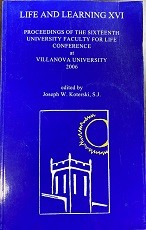Grattan T Brown

Abstract
Health care begins as an act of conscience, which urges a response to the sick and holds caregivers accountable to moral standards that public authorities ultimately do not define. Conscience nonetheless expresses itself as a type of dialogue within oneself that is influenced by dialogue with others, especially with society in the form of civil law and professional standards. A well-formed conscience for health care relates the foundations of morality to health care practices and contributes sound moral judgment about them to the common good. Some current health care policies and medical education presume a distorted view of conscience as personal sentiment. These policies circumvent serious discussion and possible resolution of society’s most vexing bioethics controversies.
Brown GT. Discovery and revelation: The consciences of Christians, public policy, and bioethics debate. Christ Bioet. 2012;18(1):41-58.
